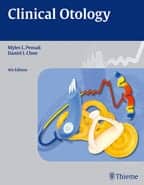 |
|
Andrew Griffith, MD, PhD |
Andrew Griffith, MD, PhD, has been named scientific director for the National Institute on Deafness and Other Communication Disorders (NIDCD), Bethesda, Md, intramural research program. He is also chief of the institute’s Otolaryngology Branch, and chief of the Molecular Biology and Genetics Section. Below, courtesy of NIDCD, Griffith speaks about the new job, his vision for the future, and other topics:
As scientific director, you are responsible for overseeing NIDCD’s intramural research program. In your view, what are some of the most exciting areas of study that are currently being pursued by NIDCD researchers?
Our intramural program has a number of labs making cutting-edge discoveries on genes, proteins, and pathways underlying the development, structure, and function of the auditory system, and especially its sensory cells. Another strong part of our program is speech and language, where our research currently ranges from identifying genes for persistent stuttering to functional imaging and modeling of language.
What new directions would you like the intramural program to take in, say, the next 5 years?
I hope to build upon our existing strengths and increase the collaborations among NIDCD investigators to tackle problems that are difficult to solve in other research environments, where it is rare to have our depth and breadth of expertise.
Your research involves identifying the genes that are responsible for hearing loss. How can our understanding of the genes that cause hearing loss help in the treatment of hearing loss?
The immediate clinical impact of genetic discoveries is that we can identify the cause of hearing loss in a significant proportion of infants and children. A molecular genetic diagnosis allows us to better counsel patients and families about their prognosis, as well as the chances of that same hearing loss affecting their family members. Genetic diagnoses may also allow us to improve care in the future by tailoring our management of patients to their underlying gene and mutation. That’s an important theme of our genetic work.
You have said that you would like to build up NIDCD’s clinical research program. What are some of your more immediate goals in this effort? Any hurdles that you foresee?
I would like to recruit someone working on hearing and/or balance to complement our existing strong basic research in this area. This position would likely be filled by an otolaryngologist-head and neck surgeon, whose clinical activities include surgery. The hurdle is that maintaining surgical competency at the NIH is difficult due to the comparatively low volume of surgical procedures, so we may need to explore partnerships with other hospitals and medical schools to provide the clinical opportunities to recruit and retain an outstanding clinician. That’s a big hurdle!
Are we talking about developing more clinical trials?
Clinical research does not necessarily mean therapeutic trials. For most of the hearing loss disorders that are genetic in origin, we are still at the point where we are trying to understand their natural history. In the long run, or perhaps even in the short term, I hope that we might be able to recruit someone who might be interested in starting a clinical trial. It’s just that it would not be a prerequisite.
You also mentioned your plans to increase the diversity of new investigators. How will you go about doing that?
It’s important to be proactive in identify promising candidates. I plan to utilize scientific meetings and my extramural and intramural colleagues to identify those individuals. I am also open to broadening our research programmatic focus in order to recruit outstanding candidates.
Finally, you are a medical doctor as well as an accomplished researcher. Was that always your career path, or did something get added along the way? What is it that a medical doctor brings to the table, research-wise?
My interest in science and medicine have always been intertwined. I never imagined a career in medicine without science, or vice versa. The clinic provides an abundance of interesting and important questions to pursue in the lab, and it gives us the perspective to identify those areas of basic research that can and should be translated into better patient care.
[Source: NIDCD]



